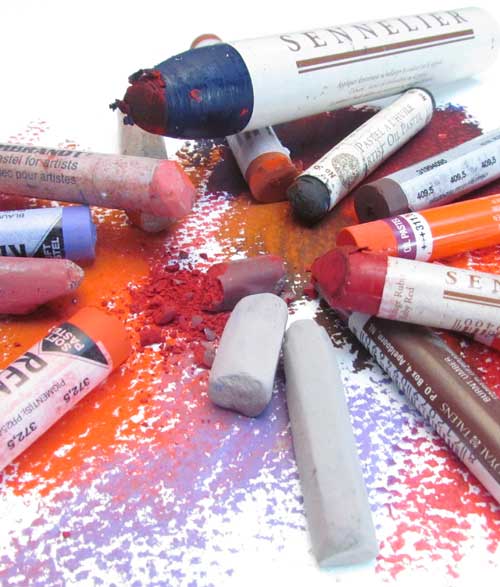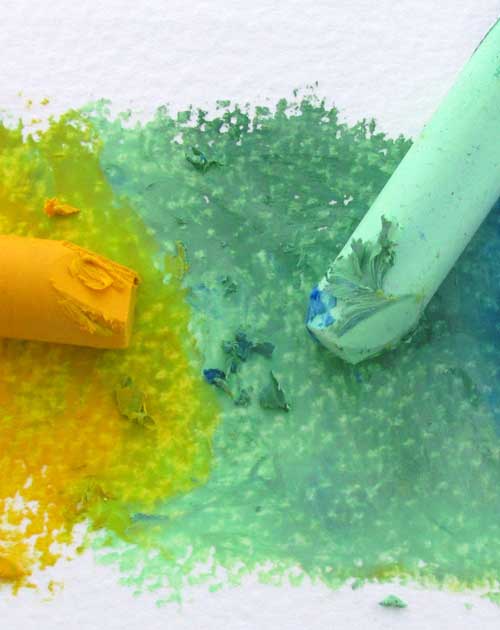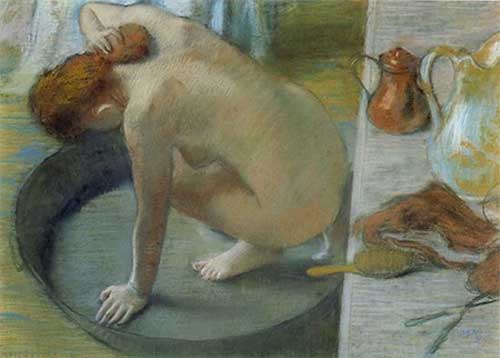Introduction to Pastels

There are basically two types of Pastel – 1. Chalk or Soft Pastels and 2. Oil Pastels – and they are very different.
The best way I find to describe the difference to complete beginners is to compare them to the drawing materials we are familiar with from childhood.

Therefore, Soft Pastels can be likened to chalk in terms of behaviour in that they crumble easily, can be blended into each other with a finger or paper stump and leave a surface covering that can be easily smudged, wiped off or otherwise damaged unless protected by fixative or framed behind glass.

Oil pastels, on the other hand, can be likened to wax crayons. They are ‘stickier’ so will not blend but colours can be built up over each other to give the impression of graduated colour and the finished artwork does not require fixing. Fixatives are available for oil pastels in a resin type form but it is not essential to use them.

The Bath Tub by Degas
Soft Pastels are pure pigment held in just enough binder to hold them together but it is this ratio of pigment to binder that is both their brilliance and their drawback. The concentration of pigment, practically free from other substances, results in vibrant, rich and pure colour that transfers easily to the surface without the need for a lot of pressure to be applied whilst the low binder content means that they crumble and smudge very easily. However, there are many types of Soft Pastel on the market with differing ratios of binder and pigment resulting in ranges that are very soft and crumble into the surface creating lovely velvety marks and harder ranges that allow the pastel to be made into a point for detailed work but do not transfer to the surface quite as readily. As your style develops, you will recognise which type you prefer . It is worth noting that very cheap ranges may contain a lot of binder and little pigment.Because soft pastel has a high proportion of pigment in it, Artists like Degas often wet areas of applied pastel to turn it into more of a watercolour medium to create different surface textures and effects.

This Oil Pastel Artwork is taken from a box of Sennelier Oil Pastels showing some the range of surfaces it can be used with. Sennelier first developed Oil Pastels at the request of Picasso who wanted a drawing media that he could paint over with oil and that could be applied to canvas, wood and a range of other materials. Oil pastels are far more robust as they are made from a combination of pigment, animal fat and wax. Because they come in quite large sticks and resist blending, they are not great for detailed work but rather lend themselves to large scale, bold colour work. As well as building ‘neat’ colour to create colour graduation effects, they can also be thinned and blended into each other with the addition of turpentine either applied to the surface or to the pastel.
